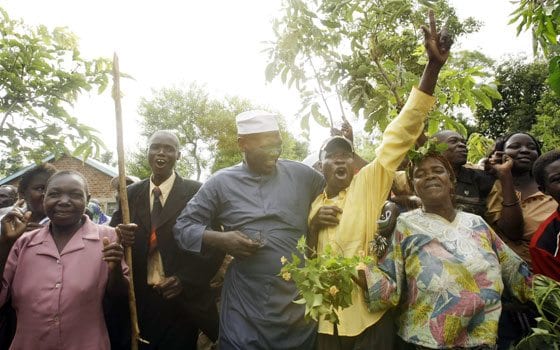
Four years ago, the Democrats were looking at a shrinking electoral map as they suffered through hard-fought losses in Ohio and Florida. Suburban soccer moms seemed to be trending Republican, while much of rural America was solidly red.
It turns out those suburbanites weren’t so wedded to the Republicans, after all.
Obama did well in key suburban counties in Florida, Ohio, Virginia and Indiana, winning all four states carried by President Bush in 2004. He also made inroads in heavily Republican rural counties, even if he didn’t win a majority of the vote in those areas.
In Florida, Obama made significant gains among voters living along the Interstate 4 corridor, a swing area from Orlando to Tampa. He won Osceola County, home to Kissimmee, and Orange County, home to Orlando. Up the Atlantic coast, Obama also improved on Kerry’s numbers in Duval County, home to Jacksonville.
In Ohio, Obama won Hamilton County, home to Cincinnati, a county that Kerry lost in 2004. He also made significant gains in suburban counties in northwestern Ohio, as well as those near Columbus in the center of the state.
In Indiana, Obama won a larger percentage of the vote than Kerry in every county, helping him to become the first Democratic presidential candidate to win the state since 1964.
Virginia exemplified Obama’s Southern strategy. Obama built a lead in the fast-growing suburbs of Northern Virginia, territory that is friendlier toward Democrats, while limiting his losses in the southern part of the state, which is more Republican.
Much was made of Obama’s lack of support among white working-class voters in his epic Democratic primary battle with New York Sen. Hillary Rodham Clinton. And in the general election, Obama did lose among whites without college degrees.
But in many of the nation’s most rural, white counties outside the Deep South, Obama did surprisingly well. He didn’t always win a majority in those areas, but more often than not, he did better than Kerry did four years ago.
About 1,360 U.S. counties have populations that are more than 90 percent white. Obama won only 249 of those counties, but he received more of the vote than Kerry in nearly eight out of 10 of them, according to the AP analysis.
Obama won in overwhelmingly white counties throughout New England and in parts of the Midwest. He won some of the whitest counties in Iowa, North Dakota, Colorado, Michigan, Wisconsin and his home state of Illinois. He didn’t win many of the whitest counties in Kansas or Idaho, but he fared better than Kerry in most of them.
The South and Appalachia were the exceptions.
In Alabama, Arkansas, Georgia, Mississippi and Louisiana, Obama fared worse than Kerry in all 49 counties where whites make up 90 percent or more of the population.
There were similar, but less severe, patterns in the Appalachian states of West Virginia, Kentucky and Tennessee. Obama did much better in faster-growing Southern states along the East Coast, such as North Carolina — where he bested Kerry in two-thirds of the predominantly white counties, and in Virginia, where he outpolled Kerry in 22 of the state’s 31 predominantly white counties.
Democrats hope the high-growth areas in the South will help them increase their toehold in a region that has largely been shut off to Democrats in the past two presidential elections.
“The people who have moved there are better educated and they make more money. It’s just a different demographic mix,” said Don Fowler, a former chairman of the Democratic National Committee from South Carolina. “That’s the South of 2008.”
(Associated Press)






